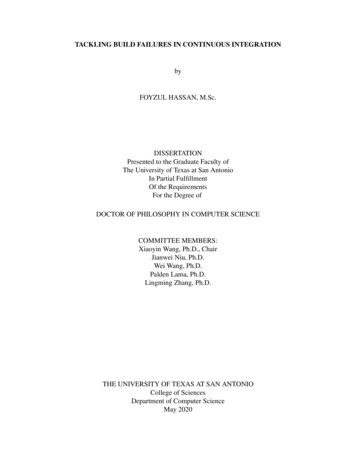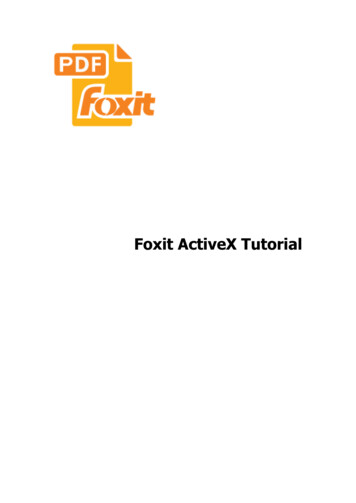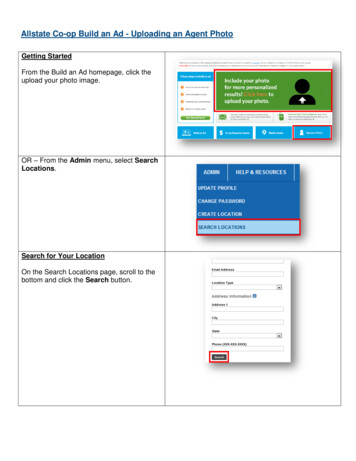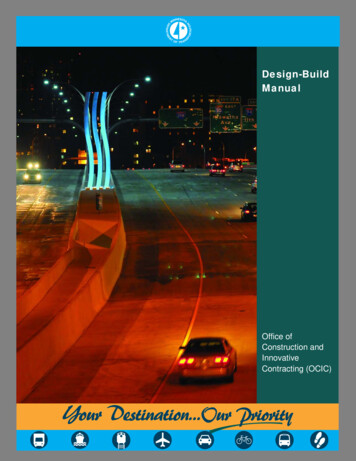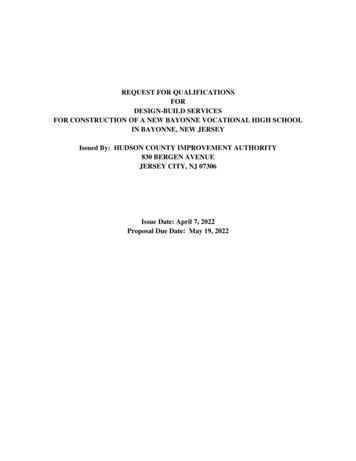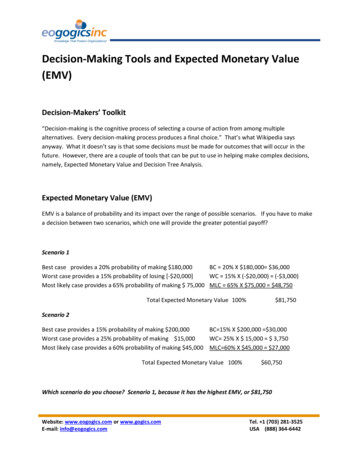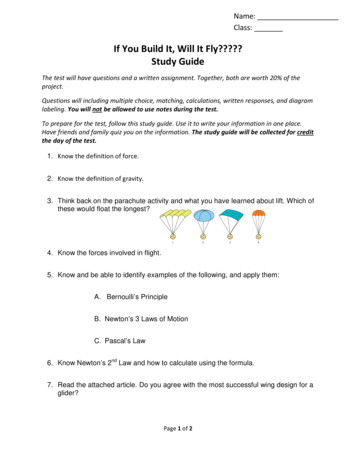
Transcription
Name:Class:If You Build It, Will It Fly?Study GuideThe test will have questions and a written assignment. Together, both are worth 20% of theproject.Questions will including multiple choice, matching, calculations, written responses, and diagramlabeling. You will not be allowed to use notes during the test.To prepare for the test, follow this study guide. Use it to write your information in one place.Have friends and family quiz you on the information. The study guide will be collected for creditthe day of the test.1. Know the definition of force.2. Know the definition of gravity.3. Think back on the parachute activity and what you have learned about lift. Which ofthese would float the longest?4. Know the forces involved in flight.5. Know and be able to identify examples of the following, and apply them:A. Bernoulli’s PrincipleB. Newton’s 3 Laws of MotionC. Pascal’s Law6. Know Newton’s 2nd Law and how to calculate using the formula.7. Read the attached article. Do you agree with the most successful wing design for aglider?Page 1 of 2
Writing PortionYou will be asked to write on the day of the test. You will choose one of thesethree topics. Demonstrate your knowledge by using terms and concepts learned duringthis project to support your ideas.To prepare, select your topic now and begin to outline your writing.1.Compare and contrast at least two different glider designs toexplain why one flew farther, faster, or longer than the other.2.Write step-by-step directions on how to build your design andexplain how each of its major features (wing design, body size, etc.)enabled it to fly.3.Write a reflection on what you learned by doing this project, whatyou would do differently if you could do it again, and what else youwould like to learn about this topic.Page 2 of 2
Wing DesignWing design is constantly evolving. If you were to comparethe wing of the Wright Flyer (Img. 1) with that of a modernaircraft, such as the Boeing 787 (Img. 2), the difference isremarkable. The number of lifting surfaces, shape, size andmaterials used all contribute to an aircraft’s performance.(Photo courtesy of Wikipedia, GNU Free Documentation License)Since the 1930’s, NASA and its predecessor NACA have beenon the forefront of wing design, developing the basic airfoilImg. 1 The 1903 Wright Flyershapes airplane manufacturers have used ever since toMUSEUM IN A BOXBackgroundprovide the lift component that is vital to air travel.Before a wing is designed, its mission has to be determined.What type of aircraft will this wing be attached to? Will it needto operate at high altitudes with thin atmospheres? Will ithave to carry heavy loads? Will it need space to mount theengines? How much fuel will we want to store inside? How(Photo courtesy of Boeing)fast or agile will the aircraft need to be? The list of potentialspecifications is long and highly complex.Img. 2 Boeing 787The same type of design challenges can be seen in nature with our feathered friends, the birds. While all birds havewings, not every bird can fly. Take the ostrich (Img. 3) for example. It is a large bird, weighing on average nearly 200pounds, but its wings are short and its feathers are fluffy andundefined. No matter how hard it tries, the wing will never beable to produce enough lift for the ostrich to fly.(Photo courtesy of Lost Tribe Media, Inc.)Img. 3 An ostrich with folded wingsparts of an airplane3
MUSEUM IN A BOXThe seagull (Img. 4) on the other hand is a small bird, weighingbarely 2 pounds, but has long, thin wings which are perfect forgliding on the coastal breezes. It needs airflow over the wing towork though, so in order to fly the bird has to first run forwardsto increase the airflow over its wings, just as a plane would onthe runway.The robin (Img. 5) uses a very different style of wing. To avoid((Photo courtesy of Arnold Paul, CC BY-SA 2.5 License)predators such as cats, it needs to be able to jump quickly intothe air and does so using short, fast moving wings that provideImg. 4 A seagull in flightlots of lift, but at the sacrifice of forward speed.Lastly, some predatory birds, such as hawks, need the abilityto fly quickly in order to catch their prey, but also need to carrythe meal home to their offspring. To achieve this, they areable to fold their wings back while diving, giving them a fast,sleek appearance for the attack, but a wide, large wingspan forcarrying heavy loads on the journey home.(Photo courtesy of Fauxpasgrapher, CC BY-NC-ND 3.0 License)Img. 5 A robin in flight4parts of an airplane
As with everything in life there are compromises and this is no different with wing design. While each design workswell, they all have limitations or restrictions making them suitable only for certain tasks.Rectangular Wing: The rectangular wing, sometimes referred to asthe “Hershey Bar” wing in reference to the candy bar it resembles, isa good general purpose wing. It can carry a reasonable load and flyat a reasonable speed, but does nothing superbly well. It is ideal forpersonal aircraft as it is easy to control in the air as well as inexpensiveto build and maintain.MUSEUM IN A BOXCompromisesElliptical Wing: The elliptical wing is similar to the rectangular wing andwas common on tail-wheel aircraft produced in the 1930s and 40s. Itexcels however in use on gliders, where its long wingspan can capturethe wind currents easily, providing lift without the need for a lot offorward momentum, or airspeed.Swept Wing: The swept wing is the “go to” wing for jet powered aircraft.It needs more forward speed to produce lift than the rectangular wing,but produces much less drag in the process, meaning that the aircraftcan fly faster. It also works well at the higher altitudes, which is wheremost jet aircraft fly.Delta Wing: The delta wing advances the swept wing concept, pullingthe wings even further back and creating even less drag. The downsideto this however is that the aircraft has to fly extremely fast for this wingto be effective. This is why it’s only found on supersonic aircraft (aircraftthat fly faster than the speed of sound) such as fighter jets and the SpaceShuttle orbiter. There were also two commercial passenger jets thatused this wing design, the Russian TU-144 (Img. 6) and BOAC’s Concorde(Img. 7), both of which could cruise at supersonic speeds.parts of an airplane5
used this wing design, the Russian TU-144 (Img. 6) and BOAC's Concorde (Img. 7), both of which could cruise at supersonic speeds. parts of an airplane 5 . Author: Windows User Created Date:

